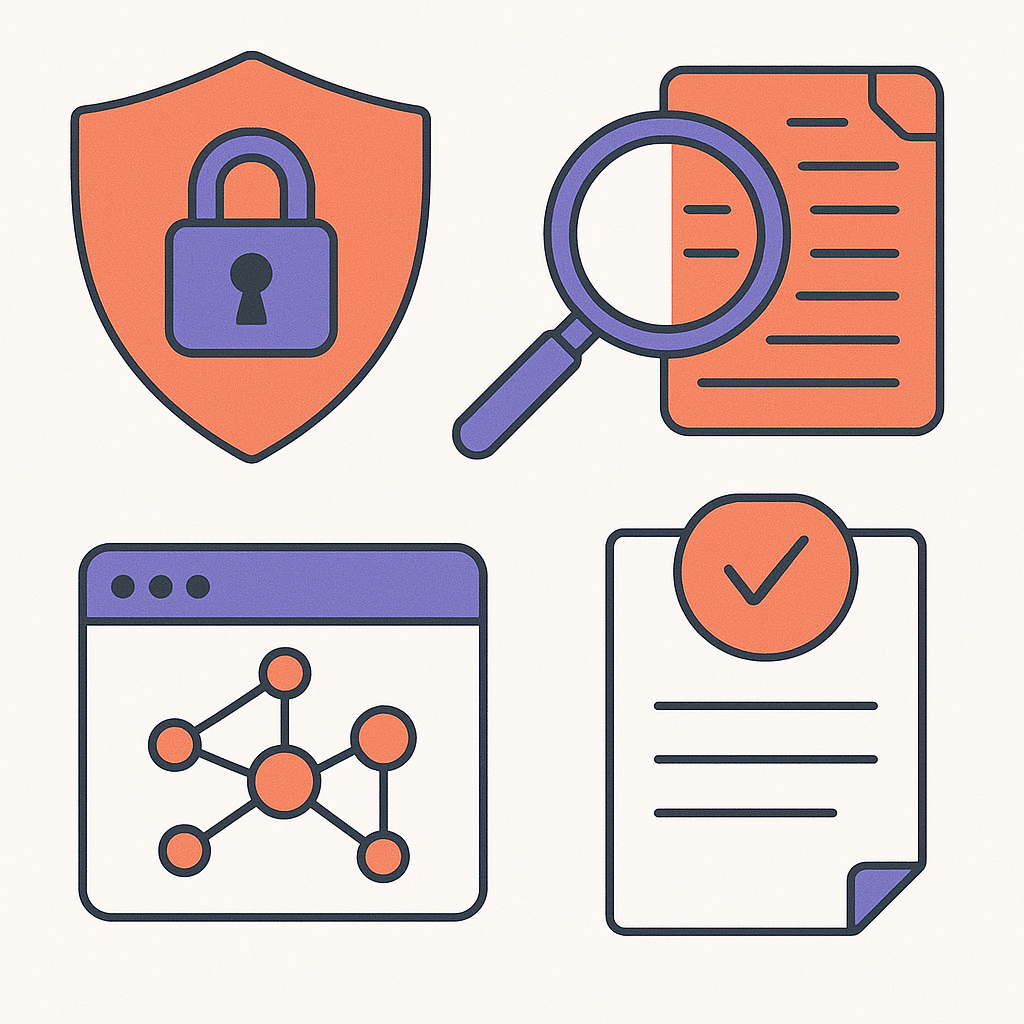

Web3 Trust Building: Tactics & Case Studies
Trust has changed from a helpful addition to an absolute necessity in the Web3 digital world.
Over 38,000 customers have employed token management services. These numbers show trust-building strategies' vital role in project success. Blockchain technology makes decentralized, transparent, and tamper-resistant record-keeping possible. These features are the foundations of Web3 leads and conversions. Projects that prioritize community building early gain benefits through word-of-mouth marketing and social media sharing. This approach directly affects Web3 sales and visibility.
Trust goes beyond technical security, it creates genuine connections. Users who trust your project become supporters instead of just participants. Your project's clear values provide accountability and clarity. This encourages the long-term commitment needed to accelerate growth. In this piece, we'll look at proven strategies, tools, and real-life examples that show how building trust can turn your Web3 project from a concept into a thriving ecosystem.
Why Trust is the Foundation of Web3 Success
Trust is the life-blood that successful Web3 projects need to survive. Scammers steal billions yearly from this ecosystem. In fact, crypto hackers stole USD 1.40 billion in just the first half of 2024. Building credibility has become essential.

The role of decentralization and transparency
The digital world runs differently when power shifts from central authorities to a network of participants. Web3's decentralized structure removes weak points that hackers often target. Users can now work together safely through consensus mechanisms and cryptographic methods, without needing middlemen.
Blockchain's permanent record system makes trust even stronger. Anyone can verify transactions, which creates more accountability than old systems. Bad actors think twice because their actions stay on record forever. The open-source nature of projects lets users check code directly, which builds more confidence in security and overall integrity.
How trust affects user adoption and retention
Web3 shows great promise but only 6.8% of people globally own any crypto. People hesitate because they don't trust these systems yet. Stories about scams, unstable markets, and security issues scare away many who might want to try this technology.
Projects that put trust first see better results. Edelman Trust Barometer shows that 56% of consumers say their direct experience shapes their trust in brands. The data also reveals that 59% of Gen Z and millennials stop buying from brands they don't trust. These numbers show how trust shapes both early adoption and long-term loyalty.
Why trust drives Web3 sales and long-term growth
Trust's effect on finances speaks volumes. Experts predict the global decentralized finance market will grow from USD 42.76 billion in 2025 to USD 178.63 billion by 2029 at an impressive 42.2% CAGR. This massive growth awaits projects that build solid reputations.
Trust boosts sales in several ways:
- Customers feel safer making transactions
- Both small investors and big institutions invest more
- Satisfied users tell others, which grows the market naturally
- Companies spend less to keep existing customers
Trust has become more than just a good feature, it now drives profits and strategy. Companies that build trust today will lead the Web3 world 15 years from now. This makes trust both a moral choice and a business necessity for lasting growth.
Core Principles That Build Trust in Web3 Projects
Four key principles are the foundations of crypto trust in successful Web3 ventures. These principles affect user adoption and sales potential.
Open-source development and verifiability
The "don't trust; verify" motto captures the heart of Web3 trust-building. Open-source code lets users check how applications work without depending on others' guarantees. Blockchains store compiled bytecode rather than human-readable source code. Public access to source code plays a vital role in true transparency. Projects like Ethereum that publish their code on platforms such as Etherscan make it possible to:
- Check functionality independently
- Let the community find bugs
- Boost security through group oversight
- Build stronger faith in project integrity
Security through smart contract audits
Smart contract audits must happen to establish credibility. These detailed code reviews spot vulnerabilities before deployment to prevent potential exploits. The audit process usually includes:
- Getting all relevant documentation and design specifications
- Running automated tests to find common vulnerabilities
- Manual reviews to spot logical flaws
- Making detailed reports available to users
Regular audits demonstrate a project's steadfast dedication to security. This builds confidence among potential investors who might worry about security risks.

Public team transparency and accountability
Team transparency creates accountability that builds trust. Public cryptocurrency addresses, like those that Ethereum co-founder Vitalik Buterin shares, allow up-to-the-minute monitoring of key players' activities. This visibility creates a self-regulating environment. Community members keep each other accountable indirectly. This ended up promoting the community trust needed to accelerate web sales and growth.
Proven Strategies to Build and Maintain Trust
Successful Web3 projects use proven trust-building mechanisms that boost user confidence and sales performance.
Use of liquidity locks and token vesting
Liquidity locks act as a strong trust signal because they stop developers from withdrawing funds from trading pools. Projects that lock their liquidity pool tokens in smart contracts for extended periods (typically one year minimum) show their long-term dedication and prevent "rug pulls." Projects locking 80-100% of their liquidity gain substantially more investor confidence than those locking only 50%.
Token vesting builds trust through structured, time-based token distribution. This approach stops early token dumps that could crash prices and keeps team members focused on project success. Most effective vesting schedules run 3-4 years, which shows confidence in long-term success and reduces downward price pressure.
Consistent community updates and roadmaps
Clear, regular communication builds community trust. Daily discussions, weekly reports, or monthly AMAs help members feel valued and informed. Sharing project milestones openly creates accountability and keeps everyone engaged.
Smart projects know that silence after launch kills momentum. They keep the energy high with regular roadmap updates and clear progress reports.
Rewarding engagement through token incentives
Smart incentive structures turn passive token holders into active supporters. Performance-based vesting models reward users based on their achievements rather than just holding tokens. Streaming tokens, unlike one-time airdrops, promote sustained participation and discourage quick selling.
Case Studies: Web3 Projects That Earned Community Trust
Real-life examples help us learn about effective crypto trust mechanisms. These three projects show how trust leads to web3 sales and community growth.
Uniswap: Trust through transparency and governance
Uniswap built trust with a reliable, multi-phase governance process. Their system starts with a Request for Comment phase that runs for 7 days minimum. A Temperature Check follows with a 5-day voting period needing 10M UNI tokens. The process concludes with a Governance Proposal that needs 40M UNI yes-votes to pass. The Uniswap Foundation promotes "credible neutrality" by evolving its governance mechanisms.
Uniswap cooperates with stakeholders to fix low governance turnout. These include liquidity providers, traders, developers, and university delegates. The platform shows transparency in its mint function. The DAO can create up to 2% of total UNI supply each year (20 million tokens) only when the community approves.
ENS: Building reliability through open standards
The Ethereum Name Service (ENS) builds trust by making complex blockchain interactions simple. Users can send funds to names like "john.eth" instead of long cryptographic addresses. ENS has registered 3.1 million names with 832,584 owners.
The system promotes reliability through decentralization. No central authority controls it because it runs entirely on Ethereum blockchain's smart contracts. Users keep control of their digital identities while the system stays resistant to censorship.
Conclusion
Trust is the life-blood of successful Web3 projects. It has evolved from a helpful feature to become absolutely essential. This piece shows how building credibility leads to better adoption, stronger retention and higher sales. Projects that focus on transparency, security, and community involvement perform better than those that don't deal very well with these vital elements.
Look at Uniswap, and The Sandbox as perfect examples. These projects didn't just get lucky, they built specific trust-building mechanisms that promoted real community connections. Their growth shows how trust propels development rather than being just a nice addition.
The practical strategies we've covered, from liquidity locks and token vesting to regular communication and incentive structures, create a clear path for Web3 ventures, both new and 5-year old. These approaches work because they address our basic need for security and reliability before we commit resources.
Want to take your Web3 sales higher? Book a call with us today and we'll help you build a story that drives real results.
Get 7 times more prospects than the average competitor




